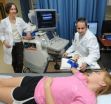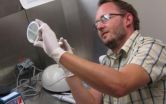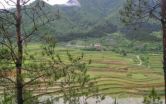Risk aversity visible in the brain
Researchers from the University of Bonn study the biological basis of economic decisions
2012-11-26
(Press-News.org) Some people live their lives by the motto "no risk - no fun!" and avoid hardly any risks. Others are clearly more cautious and focus primarily on safety when investing and for other business activities. Scientists from the University of Bonn in cooperation with colleagues from the University of Zurich studied the attitudes towards risk in a group of 56 subjects. They found that in people who preferred safety, certain regions of the brain show a higher level of activation when they are confronted with quite unforeseeable situations. In addition, they do not distinguish as clearly as risk takers whether a situation is more or less risky than expected. The results have just been published in the renowned "Journal of Neuroscience."
"We were especially interested in the link between risk preferences and the brain regions processing this information," says Prof. Dr. Bernd Weber from the Center for Economics and Neuroscience (CENs) at the University of Bonn. First, the researchers tested a total of 56 subjects for their willingness to take risks. "In an economic game, the test subjects had a choice between a secured payout and a lottery," reports Sarah Rudorf from CENs, the study's principal author. Those who showed a strong preference for the lottery in this test were categorized as risk takers. Others preferred the secured payout even if the lottery's odds of winning were clearly better. They were put in the risk-averse group.
In risk-averse individuals, certain regions of the brain are activated more strongly
Then the test subjects played a card game in a brain scanner to study their risk perception. Cards carrying numbers from one to ten were shown on the video glasses in front of their eyes. Each time, two cards were randomly drawn. Before the subjects were shown the cards, they were asked to place bets on whether the second card would have a higher or a lower number than the first one. "The statistical probability for either case to occur is always the same: fifty-fifty," says Prof. Weber. "This is important so that all subjects, whether they are risk takers or not, experience risky situations inside the scanner." They were not able to assess their probability of winning their bet until they saw the first card. Here, the researchers found that in the subjects who tended to avoid risks, two specific regions of the brain were activated more strongly than in those who were willing to take risks. These areas are the ventral striatum and the insular cortex. The ventral striatum reacts both to the probability of winning, as well as to how well an individual can predict the outcome of the bet. The insular cortex is particularly sensitive to the risk a situation carries, and for whether it is higher or lower than anticipated.
Risk seekers adjust their strategy after lucky streaks
Sarah Rudorf summarized the results, "Individuals in whom these regions of the brain are activated at a higher level seem to perceive risks more clearly and assess them as more negative than those who are willing to take risks." Risk-averse individuals seem to overestimate the consequences of risk, and they did not distinguish as clearly between situations that turned out to be more or less risky than expected. In contrast, the test subjects who tended to take greater risks also focused their behavior more towards the wins and losses, and more clearly changed their strategy after negative situations.
Study is first to show the neurobiological mechanisms
"This study is the first to show the neurobiological mechanisms of how individual risk preferences determine risk perception," says Prof. Weber. "This also has effects on behavior in the areas of finance and health."
In a next step, the researchers want to study the consequences these results have on economic decisions such as in the stock market. "This might even allow improving the advising process for investors with regard to their individual risk behavior," says Prof. Weber. And he considers health another important area. Smokers know that what they do is very dangerous, and yet they smoke. "If we learned more about smokers' attitudes towards risk, we might be able to provide information for developing better anti-smoking campaigns."
###
Publication: Neural Correlates of Anticipation Risk Reflect Risk Preferences, Journal of Neuroscience, DOI: 10.1523/JNEUROSCI.4235-11.2012
Link: http://www3.uni-bonn.de/Pressemitteilungen/291-2012.
Contact:
Sarah Rudorf
Center for Economics and Neuroscience der Universität Bonn
Ph.: 228-73-8283
Email: rudorf@uni-bonn.de
ELSE PRESS RELEASES FROM THIS DATE:
2012-11-26
AUGUSTA, Ga. – The first evidence of blood vessel dysfunction has been found in a small cohort of generally healthy young people with cystic fibrosis, researchers report.
"Even though the lung function in these kids is fine at this point, there is evidence of vascular dysfunction and exercise intolerance," said Dr. Ryan A. Harris, clinical exercise physiologist at the Medical College of Georgia and Institute of Public and Preventive Health at Georgia Health Sciences University. "We think this blood vessel dysfunction could be contributing to their exercise intolerance, ...
2012-11-26
It all started with a crab apple tree.
Two years ago, a 71-year-old Indiana man impaled his hand on a branch after cutting down a dead tree. The wound caused an infection that led scientists to discover a new bacterium and solve a mystery about how bacteria came to live inside insects.
On Oct. 15, 2010, Thomas Fritz, a retired inventor, engineer and volunteer firefighter, cut down a dead, 10-foot-tall crab apple tree outside his home near Evansville, Ind.
As he dragged away the debris, he got tangled in it and fell. A small branch impaled his right hand in the fleshy ...
2012-11-26
Visualize a dusty place where stream beds are sand and lakes are flats of dried mud. Are we on Mars? In fact, we're on arid parts of Earth, a planet where water covers some 70 percent of the surface.
How long will water be readily available to nourish life here?
Scientists funded by the National Science Foundation's (NSF) Dynamics of Coupled Natural and Human Systems (CNH) program are finding new answers.
NSF-supported CNH researchers will address water resources management and policy in a changing world at the fall meeting of the American Geophysical Union (AGU), ...
2012-11-26
MANHATTAN, Kan. -- The key to motivation in physical activity may be feeling inadequate. One Kansas State University researcher found that those who exercised with a teammate whom they perceived to be better increased their workout time and intensity by as much as 200 percent.
Brandon Irwin, assistant professor of kinesiology, was the principle investigator in a study that tested whether individuals engage in more intense physical activity when alone, with a virtual partner or competing against a teammate.
"People like to exercise with others and make it a social activity," ...
2012-11-26
CAMBRIDGE, Mass. — The quest to harness a broader spectrum of sunlight's energy to produce electricity has taken a radically new turn, with the proposal of a "solar energy funnel" that takes advantage of materials under elastic strain.
"We're trying to use elastic strains to produce unprecedented properties," says Ju Li, an MIT professor and corresponding author of a paper describing the new solar-funnel concept that was published this week in the journal Nature Photonics.
In this case, the "funnel" is a metaphor: Electrons and their counterparts, holes — which are ...
2012-11-26
An insect growth regulator is one of the latest technologies U.S. Department of Agriculture (USDA) scientists are adding to their arsenal to help fight house flies that spread bacteria to food.
Agricultural Research Service (ARS) scientists at the agency's Center for Medical, Agricultural, and Veterinary Entomology in Gainesville, Fla., are using an insect growth regulator called pyriproxyfen to kill house flies that spread bacteria that can cause diarrhea and other illnesses. When pyriproxyfen is applied to larval breeding sites such as manure, it mimics a hormone in ...
2012-11-26
New combinations of medical imaging technologies hold promise for improved early disease screening, cancer staging, therapeutic assessment, and other aspects of personalized medicine, according to Ge Wang, director of Virginia Tech's Center for Biomedical Imaging, in a recent paper that appeared in the refereed journal PLOS ONE.
The integration of multiple major tomographic scanners into a single framework "is a new way of thinking in the biomedical imaging world" and is evolving into a "grand fusion" of many imaging modalities known as "omni-tomography," explained Wang, ...
2012-11-26
Durham, NC – The question of how life began on a molecular level has been a longstanding problem in science. However, recent mathematical research sheds light on a possible mechanism by which life may have gotten a foothold in the chemical soup that existed on the early Earth.
Researchers have proposed several competing theories for how life on Earth could have gotten its start, even before the first genes or living cells came to be. Despite differences between various proposed scenarios, one theme they all have in common is a network of molecules that have the ability ...
2012-11-26
Like a homeowner prepping for a hurricane, the bacterium Bacillus subtilis uses a long checklist to prepare for survival in hard times. In a new study, scientists at Rice University and the University of Houston uncovered an elaborate mechanism that allows B. subtilis to begin preparing for survival, even as it delays the ultimate decision of whether to "hunker down" and withdraw into a hardened spore.
The new study by computational biologists at Rice and experimental biologists at the University of Houston is available online in the Proceedings of the National Academy ...
2012-11-26
On Nov. 23, 2012, at 8:54 a.m. EST, the sun erupted with an Earth-directed coronal mass ejection or CME. Experimental NASA research models, based on observations from the Solar Terrestrial Relations Observatory (STEREO) and the ESA/NASA mission the Solar and Heliospheric Observatory, show that the Nov. 23 CME left the sun at speeds of 375 miles per second, which is a slow to average speed for CMEs. This is the third Earth-directed CME since Nov. 20.
Not to be confused with a solar flare, a CME is a solar phenomenon that can send solar particles into space and can reach ...
LAST 30 PRESS RELEASES:
[Press-News.org] Risk aversity visible in the brain
Researchers from the University of Bonn study the biological basis of economic decisions




